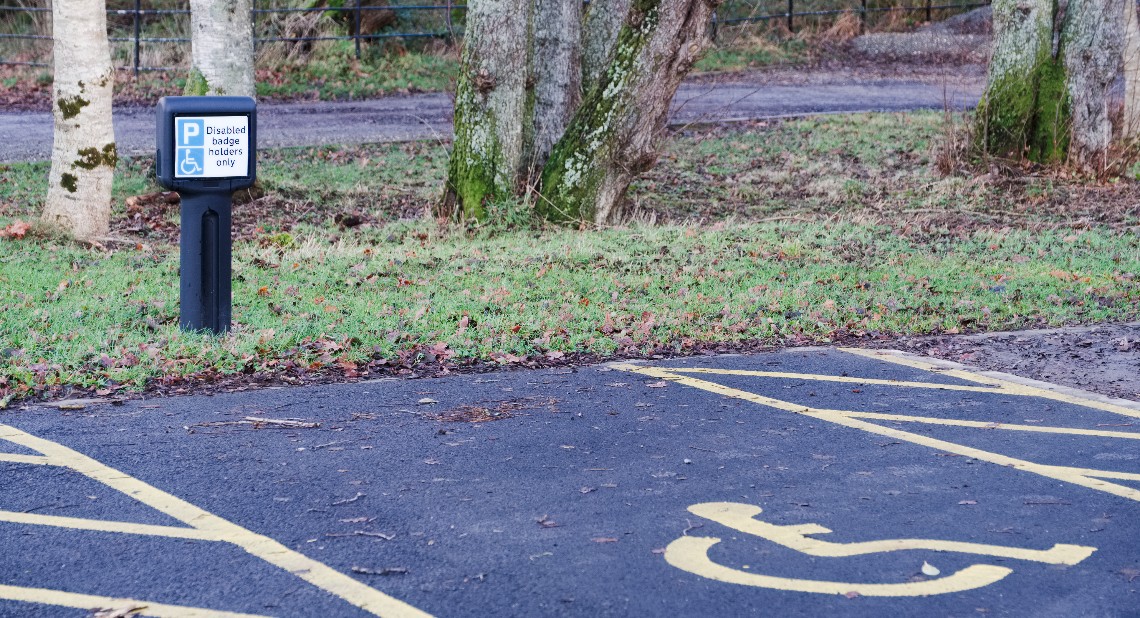Blue Badges help people with disabilities or health conditions park closer to where they want to be. You can apply for a badge for yourself, on behalf of somebody else or an organisation that transports people that need a Blue Badge.
On 30 August 2019, changes to Blue Badge eligibility were made. This means more people with non-visible disabilities now qualify. Also, changes in mobility allowances mean eligibility for a Blue Badge has changed significantly. We’ve explained this in a bit more detail. Full details can be found on the government website
People who automatically get a Blue Badge
People who are not automatically get a Blue Badge, but may still be eligible
What you need to apply for a Blue Badge
Applying for Blue Badge when you do not receive one of the benefits
People who automatically get a Blue Badge
You automatically qualify for a Blue Badge if you are aged 3 or over and one or more of the following applies to you:
• You get the higher rate of the mobility component of the Disability Living Allowance (DLA)
• You get a Personal Independence Payment (PIP) because you cannot walk more than 50 metres (a score of 8 points or more under the ‘moving around’ activity of the mobility component)
• you are registered blind (severely sight impaired)
• You receive a War Pensioners’ Mobility Supplement
• You’ve received a lump sum benefit within tariff levels 1 to 8 of the Armed Forces and Reserve Forces (Compensation) Scheme and have been certified as having a permanent and substantial disability that causes inability to walk or very considerable difficulty in walking
• You receive the mobility component of PIP and have obtained 10 points specifically for descriptor E under the ‘planning and following journeys’ activity, on the grounds that you are unable to undertake any journey because it would cause you overwhelming psychological distress
People who are not automatically get a Blue Badge, but may still be eligible
You may be eligible for a badge if at least one of the following applies to you:
• You cannot walk at all
• You cannot walk without help from someone else, or without using mobility aids
• You find walking very difficult due to pain, being out of breath, or the time it takes
walking is dangerous to your health and safety
• You have a life-limiting illness, which means you cannot walk, or find walking very difficult and have an SR1 form
• You have a severe disability in both arms and drive regularly, but cannot use pay-and-display parking machines
• You have a child under the age of 3 with a medical condition that means you always needs to take bulky medical equipment with you
• You have a child under the age of 3 with a medical condition that means they must always be kept near a vehicle in case they need emergency medical treatment
• You are constantly a high risk to yourself or others near vehicles, in traffic, or car parks
• You struggle a lot to plan or follow a journey
• You find it difficult or impossible to control your actions and are not aware of the effect you could have on others
• You often have intense and overwhelming responses to certain situations, and this causes you to temporarily lose control of your behaviour
• You often become very anxious and afraid of public or open spaces
What you need to apply for a Blue Badge
You will need:
• Proof of your identity
• Proof of your address
• A recent head-and-shoulders digital photo
• Your national insurance number (if you have one)
• Your contact details (phone number, email address, and postal address)
• Proof that you get one of these benefits:
- Personal Independence Payment (PIP)
- Disability Living Allowance (DLA)
- Armed Forces Compensation Scheme
- War Pensioners’ Mobility Scheme
Applying for Blue Badge when you do not receive one of the benefits
If you are applying without one of the above benefits, your application will need to be assessed by the local council that issues the Blue Badge. You’ll be asked to provide extra information that will depend on the answers you give when you are checking your eligibility.
If you cannot walk or find walking difficult, or you have a non-visible (hidden) condition, you will be asked to provide details of any:
• Relevant medication that is taken
• Relevant treatments that you receive, or are due to receive
• Doctors or other healthcare professionals that are, of have been, involved with the treatment of your condition
How you can provide documents
When you are applying online, you’ll be able to upload a photo or a scan of:
• Proof of your benefit
• Proof of your address
• Proof of your identity
• Your supporting documents
Make sure the photos or scans are good quality and contain all the information
asked for.
If you choose not to upload the documents when you’re applying, you’ll need to supply copies of the documents to your local council. Find out how to contact your local council.
Interested in joining the Scheme?
If you receive a qualifying mobility allowance you can use it to lease a car, scooter, powered wheelchair or Wheelchair Accessible Vehicle (WAV) on the Motability Scheme.
The Scheme’s all-inclusive lease package means that, as well as having a brand-new vehicle of your choice, your also get breakdown cover, servicing and maintenance included in the price you pay.
Learn how it works
Get a free information pack
![]()





